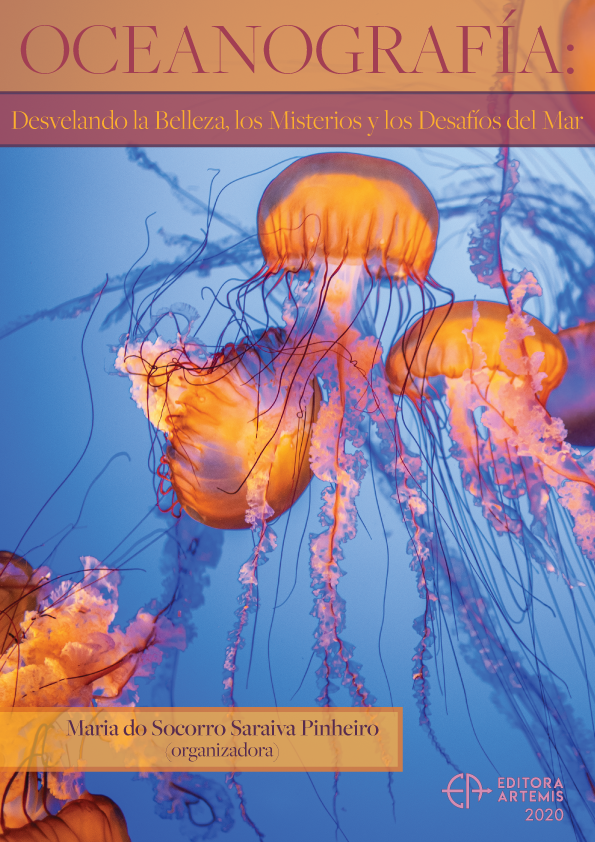
AVALIAÇÃO DE ALTERAÇÕES DE LINHA DE COSTA A PARTIR DA FERRAMENTA DE IMAGENS HISTÓRICAS DO GOOGLE EARTH: O CASO DA PRAIA DE ITACURUÇÁ (MANGARATIBA-RJ)
A zona costeira é uma área de usos múltiplos localizada entre continente e oceano. Sua densidade demográfica, geralmente, é alta, demonstrando o litoral como fator estruturante da formação do território brasileiro. As praias arenosas compõem o ecossistema costeiro mais comum ao redor do mundo, são um ambiente de sedimentação costeira e constituem sistemas altamente dinâmicos. São ambientes diretamente localizados na linha de costa, que pode ser definida como a faixa de transição entre continente e oceano. O deslocamento da linha de costa é proporcional ao balanço sedimentar, que pode ser de taxa negativa, erodindo e retirando sedimento do sistema praial. Em alguns pontos da praia de Itacuruçá, distrito de Mangaratiba (RJ), tem sido observado por moradores e frequentadores o avanço da linha de costa e a consequente redução da faixa de areia na área da praia. O objetivo geral deste estudo é analisar remotamente as alterações na linha de costa da praia de Itacuruçá ocorridas entre 2002 e 2019 e testar a hipótese de que existem evidências de erosão na praia de Itacuruçá. A partir de técnicas de geoprocessamento, foram analisadas imagens histórias do Google Earth PRO contemplando a região estudada. A posição da linha de costa entre os anos observados variou perceptivelmente, diferindo entre setores da praia. Foram observadas diferenças significativas entre as áreas de perda e ganho de sedimento na área da praia, com perda representativa. O deslocamento médio da linha de costa em direção ao continente foi de 18,7 metros, já em direção ao mar, 8,58 metros. Estima-se uma perda de superfície arenosa em ~ 7612,3 m². Este estudo apresenta a confirmação da evidência de erosão baseada em estimativas geométricas lineares e planas a partir de sensoriamento remoto e geoprocessamento. As geotecnologias utilizadas mostram-se ferramentas eficientes para diagnósticos na zona costeira.
AVALIAÇÃO DE ALTERAÇÕES DE LINHA DE COSTA A PARTIR DA FERRAMENTA DE IMAGENS HISTÓRICAS DO GOOGLE EARTH: O CASO DA PRAIA DE ITACURUÇÁ (MANGARATIBA-RJ)
-
DOI: 10.37572/EdArt_1633110201
-
Palavras-chave: Geoprocessamento, gerenciamento costeiro, erosão costeira, sensoriamento remoto
-
Keywords: Geoprocessing; coastal management; coastal erosion; remote sensing
-
Abstract:
The coastal zone is an area of multiple uses located between continent and ocean. In Brazil, its demographic density is intense, showing the coast as a structuring factor in the formation of the Brazilian territory. Sandy beaches are among the most well-known coastal ecosystems and are highly dynamic systems. The coastline, which can be defined as the variable range of transition between land and sea, is subject to changes in its position as a result of human activities. In some parts of Itacuruçá beach, district of Mangaratiba (RJ), the retreat of the coast line and reduction of the sand strip has been observed. This transition strip is a component of Orla Marítima (seafront), the territorial arrangement of continent-ocean interaction that encompasses areas that have a greater demand for interventions to discipline the use of the territory and avoid or mitigate impacts on coastal environments. The general objective of this study is to visually analyze the changes in the coast line and in the Maritime Edge of Itacuruçá beach (Mangaratiba - RJ) that occurred between 2002 and 2019. The hypothesis that there is evidence of erosion storms on Itacuruçá beach was tested. The use of the region's waterfront was also evaluated. From geoprocessing techniques, historical images from Google Earth were analyzed, contemplating the studied region. The position of the coastline between the years varied noticeably, differing between sectors of the beach. Significant differences were observed between the distances of retrogradation (advance towards the sea) and progradation (retreat) of the coastline, characterizing loss of sediment. The average displacement of the coastline towards the continent was 18.7 meters, while towards the sea, 8.58 meters. The loss of sediment is indicative of an erosive process. The proportion of buildings on the seafront increased between the sampled years, with a more significant change in the West sector of the beach (increase of 9,586 m²), varying significantly from the others. The sector of the Maritime Shore with the largest area altered anthropically coincides with the portion of the beach that shows the greatest evidence of erosion. The displacement of the coastline depends on many factors, but the results indicate that there may be some relationship between anthropic transformations on the Orla Marítima and the displacement of the coastline on this beach on the green coast of Rio de Janeiro.
-
Número de páginas: 12
- Rayane Romão Saad Abude
- Kátia Regina Góes Souza

